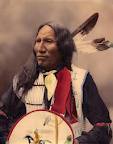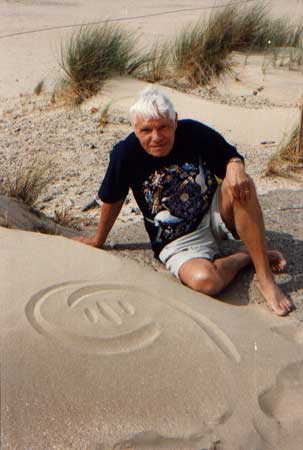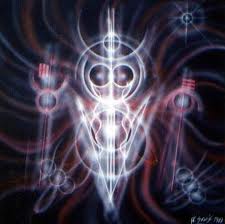The Shamans
Introduction
In the three years I have been running this website the truly innovative ideas I have launched here as regards archaeology are several. The concept of a climate change between 4000-3000 BC, coined the Neolithic Ice Age (NIA), is one such idea which then is seen as the primary reason for the profuse building of artificial caves as refuge places on the windy sea coasts of Atlantic Europe, this being a new approach to the well-known megalithic chambers, deemed burial places by all archaeologists.
Then I have argued that subsequently some of these chambers were explicitly built as maternal clinics, like Newgrange and Maeshowe or single delivery rooms like Knowth, Dowth and Cairn L, Loughcrew and that only after the Ice Age was truly over, say 2900BC, the chambers, which had lost their primary functions, became used as burial chambers (like a church can contain burials from long after its erection, however it was never built for that purpose).
So I place the megalithic chambers initially in the context of bare survival, as refuge under forbidding weather circumstances, a fortiori survival of women and new-borns, which would subsequently evolve into centres of cosmology (observers staying over at night), medicine and mathematics (Loughcrew, Maeshowe, NessBrodgar), in short, centres of learning. The alarming demographic under-representation of women (1:3 at thirty) must have had a profound impact on society with a substantial amount of ‘idle’ men with a lot of time on their hands. This is the group which must have formed the core of the work forces which brought these giant megalithic works about.
In continental Europe the end of the Neolithic Ice Age also meant the end of the megalithic culture (Trichterbecher,TRB) with its communal outlook and burial practices around 2900 BC. The individualistic, fully agrarian, axe wielding and alcohol drinking Beaker culture became dominant, the ego had triumphed and the erstwhile spiritual ‘Rausch’ got degraded into a ‘recreational Rausch’ and began conquering Neolithic Europe bringing to an end a spiritual era which would never return again.
Last but not least I claim the standing stones, be they single, aligned or in circles, were found to be lightning conductors and, placed in circles, became instrumental in triggering downpours from a thunderstorm, that is, it was a technological innovation in the long standing tradition of shamanic ‘rain-making’. The shaman is the ‘master of fire’ and impervious to it, some do even aspire to be struck by lightning, so the shaman is the perfect conductor to orchestrate a stone circle with drums, you bet, create a thunderstorm and ‘let it rain’.
On top of that I have, I think convincingly, shown that many megalithic designs are intricately geometrical and symbolize a mathematical truth which is found in the ratio of the double rainbow, 14 over 11. (Maeshowe, Brodgar, Stonehenge)
Although I had mentioned ‘rainmaking’ as relating to shamanism earlier, it is only since I have been reading more extensively about shamans that I realized that also ‘lightning’ as symbol of fire, the ‘rainbow’ as the ladder by which the shaman climbs to heaven and not to forget the ‘circle’ itself, as ring of people, are key symbols of shamanism, so I came to the conclusion that unawares I had been describing the shamanic horizon underlying the design of the megalithic buildings and that therefor shamanism is likely to be the key to the spirit of the Stone Age and its final scientific apotheosis in the Atlantic Megalithicum of the British Isles.
I once attended a ‘shamanisation’ by an Hungarian shaman, the late Joska Soos, in Oibibio, Amsterdam, and I found recently in an ‘autobiography’ of him and in his paintings an explicit confirmation of the link between mathematics and shamanism (see below). Since Soos explicitly denies that shamanism is a religion – which I sensed about the Stone Age all the way – he nevertheless sees shamanism as ‘the source of all religion’. Let us take that authoritative insight as the theme by which we can try to weave a ‘spirit of the Stone Age’ out of the above mentioned cultural threads.
Shamanism
30,000 year old West-European cave painting of a shaman
There can be no doubt that the shaman has come down to us from deep in the Stone Age, that the shaman, in an important sense, is the spirit of the Stone Age, all over the world. Although the shaman was of the highest authority in the community, they usually were a ‘primus inter pares’, a ‘first among equals’ in daily life and up until this day, in those rare communities in Siberia, where the ‘original’ shaman still exists, this is the case. The spirit of equality and compassion is very strong in the shamanic society and symbolizes the egalitarian character of the Stone Age, since both men and women were shaman.
The shaman is in a sense the Ur-typ, the arche-type, of the enlightened personality, the truly ‘inspired’ teacher, the accomplished human being, and whatever their many baffling skills, it is the healing of body and mind, the restoring of harmony to the soul, be it individual or communal, which is their essential function, their ‘raison d’etre’ (reason of being). The shaman is there to help and cure others, that is what they are chosen and educated for, he or she is originally a ‘chosen-one’. Their spiritual training of seclusion, celibacy and meditative practices, lies at the root of yoga and meditation, their spiritual flight is at the heart of our dreams, their ‘Rausch’ (trance) has produced visions, medicines, arts and sciences, they are the masters and magicians of the mind, the sufferers of every human illness, the seers of future and truth; in their extra-ordinary practices they need the help from the spirits of animals, the spirits of trees and of rocks and sometimes they engage with the dead, indeed. This extra-ordinary personality was the spiritual refuge for Stone Age society; it’s a world where the Mind rules supreme.
A heavy way
Only few are called upon to become shaman, it is a heavy way and only few possess the personal integrity to deal with the power they can wield over others; if a shaman makes a (moral) mistake it can mean their own death. The essence of the shaman, and this is their deep humanity, is that her or his life itself is a sacrifice to the community, because to become a healer they have to go through great ordeals of body and mind themselves, so as to be thoroughly purified and free from ego and selfish motives to serve the ‘world’; they must be prepared to face death for the well-being of others without harming others. Where do you find that today? Only in the highest teachings on selflessness in our religions.
We see that this highest ideal of self-sacrifice for the ‘benefit of the whole’ comes straight from the shamanic ethics, that is, from the Stone Age.
No doubt there have been evil shamans as there are evil thinkers, but the essence of the general occurrence of both these types of teachers is that they use the gifts of their extraordinary or superior insights for the good of all, not for the greater glory, power and advantage of themselves and their kin. The profound compassion embodied in the shaman is the most solid proof of the sincere humanity of Stone Age society, thus all the prejudice in talk of ‘barbarian practices’ is obviously blown out of all proportion when set against the essentially ego-less altruism of the shaman, as a moral role model of his age. It is in the ‘outstanding otherness’ of the shaman, that we can understand the basic equality of the Stone Age society, its natural caring for the fellow human, its purity of intentions, its purgations by psychotropic substances, processes in which there are no spectators only participants, where the family or the community as a whole become the healing agent guided by the shaman, be it man or woman, as the medium, as the messenger of the Beyond. This can only function when all barriers between people fall away and this can only happen where egos dissolve and equality arises as the source of healing harmony in humanity.
Equality
When we do not grasp the profoundly egalitarian spirit of the Stone Age, the personal sacrifice of the shaman and the highly communal emotional cohesion, which during deteriorating weather conditions was further fostered in the long spells of hardship when they were sometimes packed together in the refuge spaces, collectively surviving forbidding circumstances, with a lot of patience and forbearance, (communal chambers became huge in Orkney, several of them 20m inside), if we do not see the spiritual purity and humanity of their society, then all our imaginations about life in those ‘halcyon’ days start from a biased ‘primitive’ perspective, a misunderstanding, if not a caricature of ancient human beings, the very people we descend from.
The equality of the Stone Age, as evidenced in the communal burials of people of all ages, is best gauged in the equality between male and female shaman, this is the root of the egalitarian society and why shamanism cannot be called a religion. Religions are institutions based on collections of moral stories and prescriptions, ‘received and passed on’ by enlightened male teachers, usually put down in scriptures, guarded and ruled by men, inside male bastions also known as monasteries. Women have traditionally no role of substance in religion, this is so all over the world; a priestess occurs only in a shamanic setting.
It is this hierarchical social inequality between male and female which justifies all inequality in society. ‘Inequality’ is a state of mind, it is the ego, which is urged to stand out and triumph (hero), but on the other hand also ‘equality’ is a state of mind, it is without ego, it is the union with the One as the source of compassion and ‘enlightenment’, which is a female aspect. Shamanism has all the characteristics of the female, religion has none.
So where did women lose equality along the way, one may wonder?
Agriculture, a female revolution
In my analysis the whole Neolithic agricultural revolution is female in character, because it springs from the female side of the hunter-gatherer society, that is, from the gatherers, the women. To this day it are usually women who have and tend herb-gardens and we know that all early medicine is based on herbs and plants. Our Ur-typ of this female preoccupancy with herbal concoctions is, of course, the witch. She even flies like the shaman on her broom. Hunting and gathering is initially a state of ‘pursuing and taking’ from nature (male), whereas nurturing herb-gardens and nourishing animals (ducks, geese, goats) is a state of ‘giving, caring’ (female), so in effect it was a deep cultural revolution which took place and at first this gave women the upper-hand, they became the masters of the house and its direct environment, while the men ‘worked’ for them and their offspring in a secure and comfortable setting. Instead of ‘killers’ men became ‘carers’, instead of free-roaming, he had to manage a schedule, he started to manage time; many men psychologically never really took to the change, they have always remained hunters.
Hunting is not ‘working’, of course, otherwise it wouldn’t be a sport of the elite. Hunting and fishing is the male in his erstwhile free and pristine independent natural state, which he lost since the Stone Age and is still desperately trying to revive in the few ‘free’ hours that are left to him.
It has often been wondered why, for heaven’s sake, the hunter-gatherer lifestyle which was so much less labour intensive and cumbersome than agriculture was ever given up for the sedentary agricultural lifestyle. The answer in my view is clear, it was: the women. The women brought this about, they wanted a husband-man (husbandry) with a farm and a permanent shelter (house) for their children, no longer the exhausting life with a hunter without a home, than a feeble hut and sometimes even nowhere to go. So it was the preference of women which made young men go out into the woods with their axe and clear the land, build a firm wooden house, wait for local women to appear and start a family. And so it spread and came about (There seems to be genetic evidence for this scenario)
Master of the house
So agriculture was a female revolution and brought unwittingly a take-over of domestic power, the woman became the master of the house(hold) and had under most circumstances her man nearby; it became a success as we see today. In the Stone Age women languished in an alarming minority of 1 to 3 males at about 30 years of age, on average the end of their short lived lives. They lost their infants and own lives at an abominable rate under exhausting circumstances and with insufficient comfort to recover. Today though nearly everywhere women get older than men and are in the majority. Taken that it is a bare 10.000 years on the hundreds of thousands preceding, that is a resounding success for women.
Losing his dominance in the family life and the control of his transient ‘hut’, seeing women taking over on the domestic front, the male ‘conspired’ successfully to regain his dominance outside the house in the communty and did it by building himself the bigger house, where he and his ‘brethren’ were the boss again, he built himself the ultimate house, he built himself a ‘temple’, and he convinced woman that this was not for himself and his dominance, but for the ‘gods’ (his gods) and their dominance.
This gender inequality is the root of all social inequality and the bastion of male superiority in society. This is the paramount reason why religion is different from Shamanism, why the priest is just a shadow of the shaman, why women are banished from spiritual authority, why mysticism and morals are no longer at the heart but at the periphery of society. Religion is a male message, an urge to convert, a conviction of being right, of embodying the ultimate truth etc., shamanism has none of it, because it is from the heart not from the head, because it is rooted in compassion with fellow humans, whereas religion usually does not practice the compassion it preaches.
What I want to stress is that shamanism can be seen as the genealogy and evolution of the human mind, but also of its compassion, breaking free in susceptible individuals, where it manifests itself as, indeed, the ‘soul’ of the human condition, be it male or female. Undergoing and managing the hidden powers of the mind, that is the extraordinary importance of shamanism and the cause of its resilience and resurgeance in our age. It is an endangered wisdom which should not go lost.
Information
‘Information’, ‘getting information’, are terms often used with respect to the ‘spiritual flight’ of the shaman which gives it an unexpectedly modern flavour. We read the shaman moves into ‘the other world’ to retrieve ‘information’, on how to heal a sickness, help a community, or do fortune-telling, or any other ‘incredible’ thing these shamans do in the eyes of an ‘ordinary mortal’. By encountering the spirit of a medicinal plant, for instance, the shaman, during the ‘Rausch’ (trance), gets ‘information’ by its spirit on how to use the healing qualities of the plant, this way they gain knowledge by, what seem to us, ‘supernatural’ means.
But then, if scientists, artists, composers find creative solutions given them in their dreams for free without the ‘supernatural’, would then not the shaman, the tireless worker and expert on dreams, be the most well-placed to retrieve even more knowledge at will, just by being ‘extremely natural’ about it all? This is more than likely precisely the way the most precious of knowledge has originally been gained by mankind, through mind-altering plants and fungi, producing extraordinary insights and revelations on plants, animals, the cosmos and themselves. A prodigy is born, not made, a prodigy is a shaman, a shaman is a chosen-one, a genius, answering a fateful call, without much choice. If it were common there would be more genius in humankind.
Shaman and the standing stone (part 2)
Apart from the fact that the Atlantic Megalithicum culture put so much energy in big stones, megaliths, they appear to have been actually very fond of stones in general as is again and again shown in the ‘uselessly’ small neatly polished stone axes found at the Ness of Brodgar and several mace-heads as well, sometimes small stones seem to have no practical function at all and are just extremely smooth and nice in the hand, the ‘nature and feel’ of the stone is the essence of its specific ‘healing influence’, you’d say. A lot of people today still believe in the healing influence of stones, a very old belief, no doubt.
The megalith
Putting the stone upright was honouring it and making it enter the world of man, who go upright. Everyone who ‘encounters’ a big standing stone knows it has an enormous ‘presence’, which is its ‘uprightness’, it has been singled out, been chosen to stand in the world of man, but it could not get there on its own, that is its mystery. Where do you come from, what are you doing here? In Holland the megalithic boulders come from the glaciers of Scandinavia, a thousand miles away carried by the glaciers of ice-ages. The more foreign a stone is to its environment (no living rock in the whole of Holland), the more magic and enigma it is bound to exude. Where do you come from? It could be, and this holds especially for the single standing stones, that it was raised where a shaman had been hit by lightning, or lightning had hit the ground, marking an auspicious place in the subtle power grid covering the upper surface of the earth. It could be. Nobody believes standing stones were placed at random and nearly everyone who knows sufficient places and gives it a thought will conclude that it usually enhances the power of an already special place by singling it out, giving it focus; a spot to experience the whole environment. I am pretty convinced that the triad lightning-shaman-standing stone is a valid one, that the standing stone through its ‘sun-spirit’ can be seen as a bridge between Us, the Underworld and the Beyond. The standing stone is associated with the energy of the Sun as well as of the Earth, but also with the spirit of male and female reflected in its shape.
Cult of the dead?
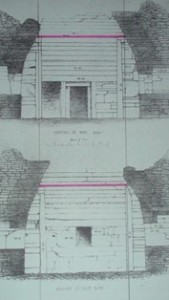
In Japan, where shamanic Shinto animism has reigned from time immemorial, spirits reside in the house preferably in the upper corners of a room. So the buttresses with their standing stones in Maeshowe, when pictured flat-topped and level at 10 Megalithic Feet height (2.96m), would provide an abode for the ‘cardinal spirits’ at the cardinal points of the central space of the building, North, East, South, West……, which figure prominently in shamanic invocations.
In the shamanic animistic worldview every block of stone in a building has a spirit (animus), how much more when these are upright stones like the buttresses in Maeshowe and all the other standing stones, aligned in line or in circle at given points in the landscape. The spirit of the stone though is not the spirit of the dead, it is the spirit of the stone. But since spirits are essentially equal (because all is One -which also explains the natural enlightenment and equality of the shamanic society) and since spirits are interchangeable, no doubt the spirit of the dead can enter the stone and find a temporary abode there. When you touch the stone and hold it for a while it may tell you its wisdom, like trees do. So that stone circles were places where shamans could convene the spirits of the dead, is plausible, but is it a cult of the dead? No, it is shamanism, and in shamanism everything is ‘alive’ and ‘spirited’, so how could it be a cult of the dead? The shaman communicates, as we say, with the spirits of the dead and many other spirits, that are very much ‘alive’ and no one with any knowledge of shamanism will judge that it is a cult of the dead, although the dead can play an important role in it, like they can in our own lives. We see the same ‘entering the sphere of the dead and of spirits’ in Tibetan Buddhism with a different emphasis, but in many of its cultural manifestations close to the shamanic tradition; but no one can seriously call Tibetan Buddhism a cult of the dead.
Listening to trees
We know it is not given to just anyone to listen to a tree (let alone talk to it), but this does not mean that we have some kind of superior rational understanding, when we think it is nonsense. That attitude of ‘rationalist science’ and the prevailing general ‘common sense’ in its wake, that attitude of ‘knowing’ something about the profound mystery of life is just preposterous, if not really stupid, and certainly one of the biggest spiritual deficiencies of modern day ‘scientific’ Western culture. It stems from the all-pervading materialistic scientific interpretation of reality, of which of course the Big Bang is the ultimate symbol. That ‘superior’ rational interpretation though always immediately breaks down as soon as it cannot explain phenomena outside its own reference frame, the mystical, the magical. Scientists ignore these facts or simply don’t believe them or, worse, ridicule them, as if they know something about the mystery of life. (I hope this site will provide a start for a vocabulary and logical framework which is able to translate also the ‘inexplicable’ in a consistent ‘logical’ description, because in my view all and everything that can be talked about can descriptively be brought back to a common ground.)
We know the druids revered the oak and its mistletoe and no doubt listened to the holy trees in their sacred groves, but we know also from Caesar that they were of the opinion that writing ruins the memory of man, so all knowledge should be memorized, not written down. Unfortunately there is great wisdom in those words, on the one hand their knowledge is lost, because not recorded, on the other it seems indeed the power of the human mind has deteriorated and that that is the reason why educated Stone Age people have the edge over most of us and our scientists today. Like druidic pupils also the shamans went through a long schooling and of course this was all memorization and direct experience, no reading and writing.
Socrates
After having Socrates denounce ‘writing’ in his dialogue with Phaedrus, Plato wrote: ‘The first prophesies were the words of an oak” and he goes on to state about ‘the people of old’ that they thought it rewarding ”to listen to an oak or a rock, so long as it was telling the truth.” Socrates even lectured Phaedrus for not heeding the words of an oak, as if it were not the content of the words which mattered, but who they were related by.
You would never have thought this would come from Socrates or Plato, would you, and where do these oaks and rocks come from you may wonder, maybe Wales or Brittany? Or is Plato talking of the people of old in general as: all the Shamans, the innumerable enlightened-ones preceding the Buddha, the Immortals absorbed in the eternal Tao?
Patience
The state of knowledge that I attribute to the Stone Age is based on the assumption that they discovered the cycles of Sun and Moon, had to make calculations and records to do this, mastered prediction of eclipses, found the ratios between square and circle and derived the double rainbow proportion.
Patience is the key to this knowledge and to all the countless lost crafts of the past, it was after all a different state of mind, where time did not count and perfection was the norm. Already the audacity to dare start charting the night sky, given the tools they had, is awe-inspiring by itself. (Did you ever look up at the stars and imagined you had decided to understand and make sense of what you are seeing?) Night after night making observations, or waiting for the sky to clear in the North, generation upon generation memorizing the assembled knowledge.
Discovering after hundreds of years the intricate cycle of the moon must have been a momentous event, for which there was every reason to cast such knowledge into stone so as to never ever let it go lost. To this spirit we owe the great scientific megalithic works, also those of Giza, where the spirit of the great healer and architect Imhotep would hover over the work force.
European shamans
In the late eighties I attended a ‘shamanisation’ by the Hungarian Joska Soos in Oibibio in Amsterdam. He used Tibetan singing bowls in his performances. Soos tells us in an auto-biography how he was ‘born with the caul’, auspicious, and coming from a shamanic family background. He was educated by the shaman Tamas Bacsi who indeed listened to the rustling birch for predictions and exposed himself to lightning (to no avail). Lightning is the symbol of the power of the shaman: they control fire and are impervious to it.
In the context of this website Soos has some interesting experiences to share in that he tells how he as a kid had a profound vision on the nature of reality which he describes as follows in ‘I don’t heal, I restore the harmony’ p.39: ‘Then I did experience the mathematical structure of the micro- and macro cosmos and it were mathematical structures and fabrics of power-lines like you’ve never seen. This was not Euclidean mathematics, this was something completely different and they moved, they were alive. The one changed into the other and the differing mathematical figures were space and time at once. I felt space, time and light, the white light”.
I feel very much at home with such a description because it so closely describes the mathematics and ontology I propose in these pages. It was ‘alive’, it ‘moved’, it was ‘complementary’ as one moves into the other and there was the ‘white light’; so then we are ‘at home’.
In Soos’s adagium on healing we recognize the shamanic humbleness as: ‘it is not me who is doing the healing, I just put things back in the right place, the healing happens from the restored harmony of the soul itself”.
When we see Soos’s pictures it is obvious this deep early ‘revelation’ stayed with him all his life and evolved into light-beings and singing bowls.
The use of circles, half circles, straight and parallel lines remains part of Soos’s way of expressing the ‘Beyond’ and what he ‘sees’.
What I want to argue is that just as the shamans were capable of retrieving ‘information’ from a plant or tree they would have been able to ‘supernaturally’ retrieve information about mathematical rules and physical laws by producing circles and making geometric connections between the standing stones in the circle. This way they could not only physically enter the geometry of the circle, but in their ‘Rausch’ connect to the cosmic (mathematical) spirit of the design, which was revealed in ‘eternal’ ratios of numbers, held in patterns.
According to Soos the polar star is object of a cult in shamanism, because as central star, circled by all the others, it is ‘the great door to the Divine’. But also the Great Bear is singled out and revered. Do we call this religion? Or better shamanic cosmology? (I have argued elsewhere that the engravings in Newgrange and Orkney recumbent stones depict the Polar star and the Great Bear, see Skara Brae and Science)
Even more striking in my view are the descriptions of space by this old shaman Tamas Bacsi. The universe is full of tiny holes, he said, the cow, your hand, full of tiny holes. “You look at the sky and then you will see the little coloured holes which you can go into and enter a different space, a different existence”.
It certainly combines well with my concepts of space-pixall, zero-point, zero-dimension and pure light. As Soos relates his actual experience of the holes 30 years later, he describes something which I experienced myself several times long ago, that space is an aggregate of coloured sparks, that it is indeed granular and full of light. This experience is the basis of my certainty that my concepts are sound, I’ve ‘seen’ it, so to speak. Also Tibetan ontology has ‘sparks’ and ‘space-particles’ as fundamental concepts.
It may be clear that I have been inspired again by ‘the people of old’ where it comes to their piercing insights and intimate feeling for ‘reality’. I always come away wiser when I let them be wiser than me, that is also the best way to let them come close. The silence of the Stone Age has still a lot to tell us.
**************
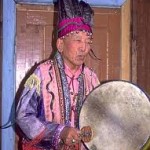
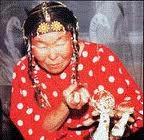
![the-sorcerer-300x298[1]](https://goudryan.com/wp-content/uploads/2012/04/the-sorcerer-300x29811-150x150.jpg)
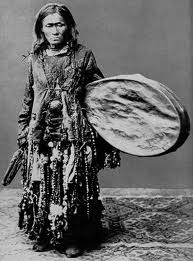
![images[6]](https://goudryan.com/wp-content/uploads/2012/04/images6.jpg)


